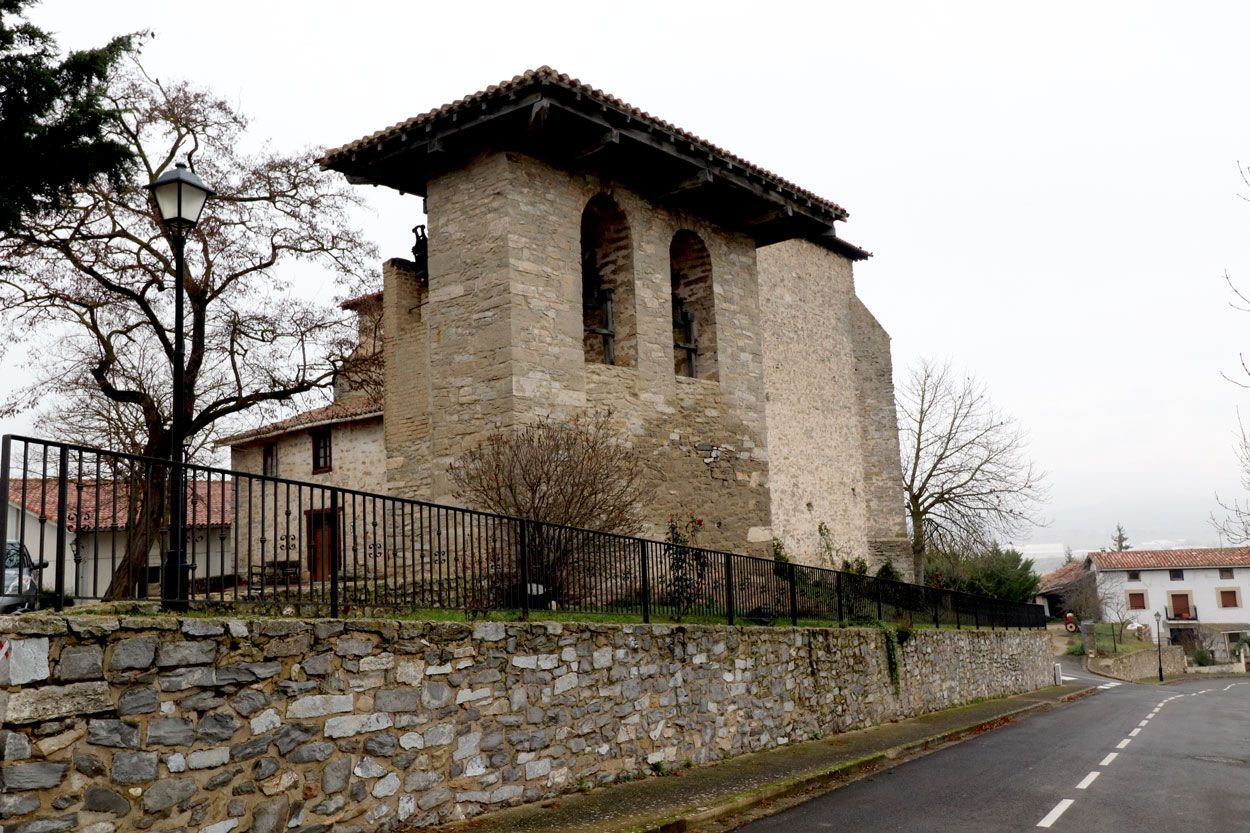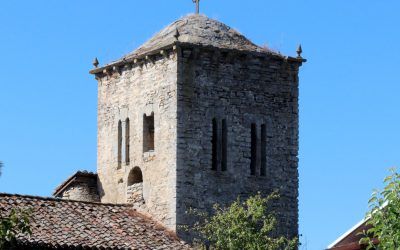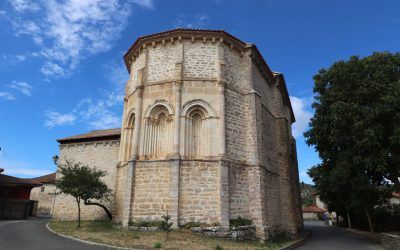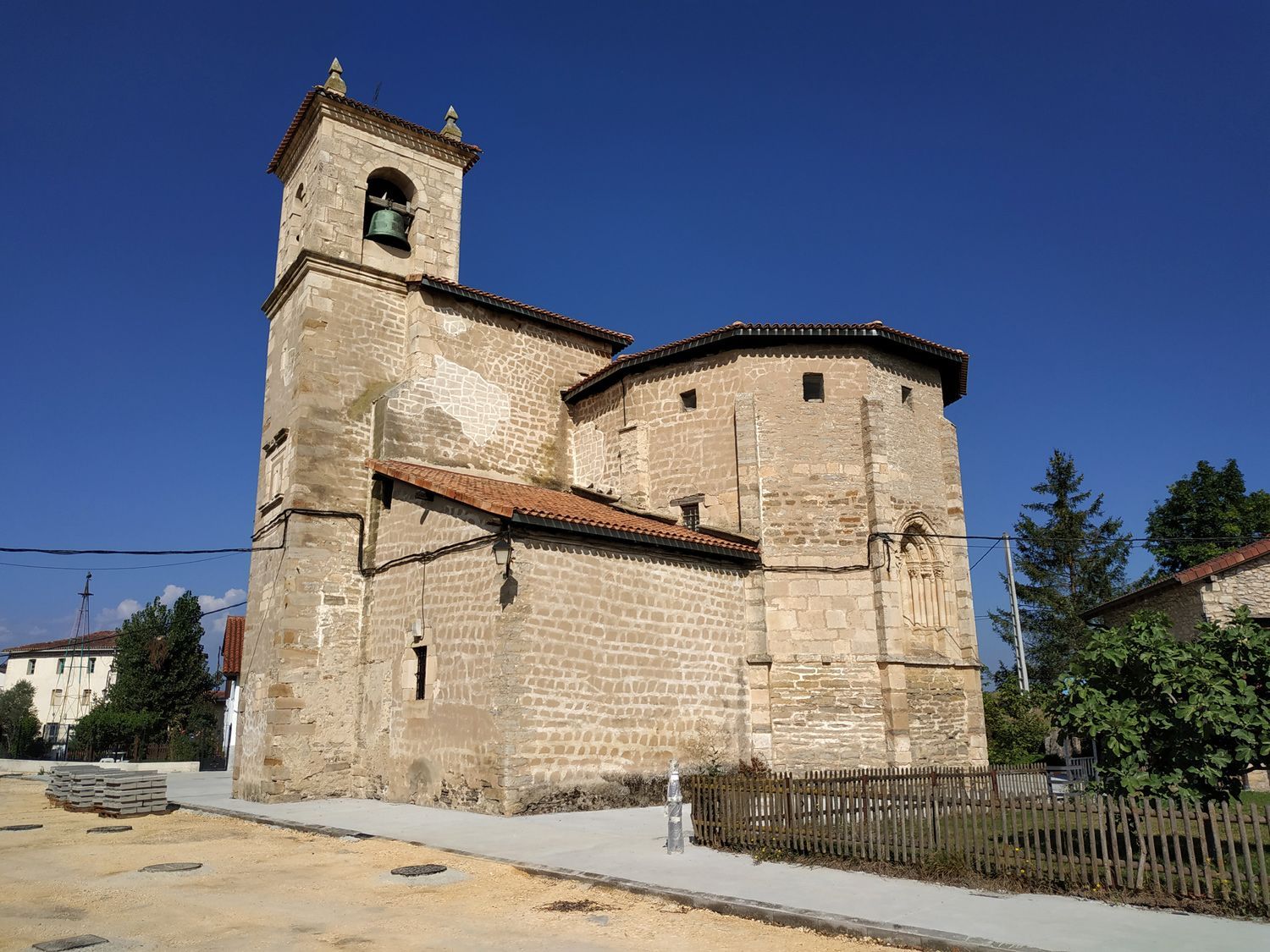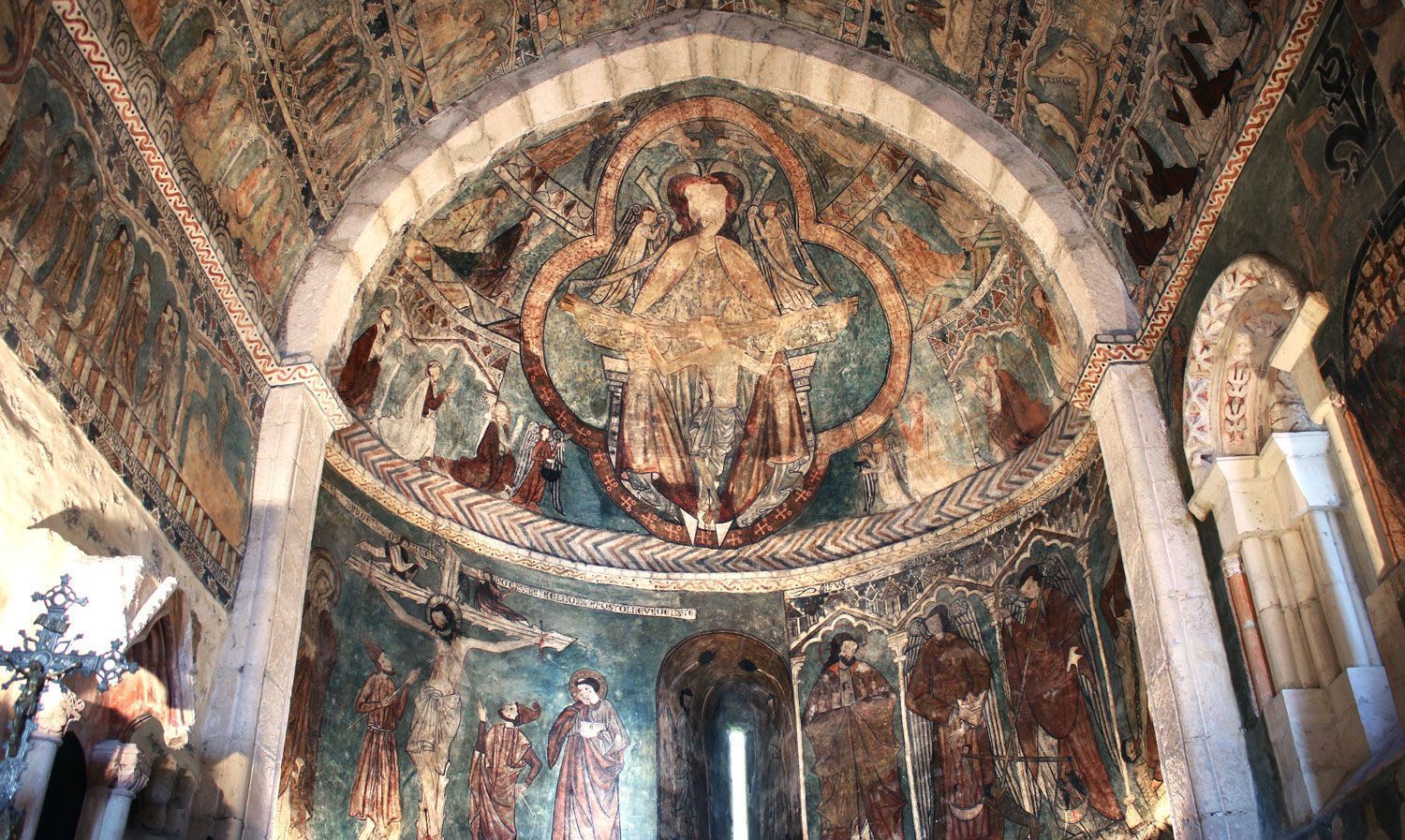
Ate digital bat ondareari irekia

No se encontraron resultados
La página solicitada no pudo encontrarse. Trate de perfeccionar su búsqueda o utilice la navegación para localizar la entrada.
proiektua
Ondare irekia/ Patrimonio abierto, Álava Medieval/Erdi Aroko Arabaren egitasmoa izan da, Fundación Vital fundazioak babestu egin duena. Ekimen honekin, ate digital berri bat irekitzen dugu proiektu honetako puntu ezberdinetara gerturatu diren pertsona guztientzat.
Zure smartphone-arekin eskaneatu dezakezun QR kode baten bidez, eguneratua dagoen informazio historiko-artistiko bat eskura izango duzu. Honekin batera, baliabide digital batzuk izango dituzu, hala nola, inguruaren 360°ko argazki bat. Horrela, orokorrean publikoari itxita dauden toki hauek eskuragarri izango dituzu.
Subillana Gasteizko San Esteban Eliza
Subillana-Gasteizi buruz ditugun lehenengo albiste historikoak XI. mendearen hasierakoak dira, eta bertan “Subillana” izenarekin agertzen zaigu. Eliza honen eraikuntzaren historia XVI. mendean hasi zen eta mendeetan zehar jarraituko du, interes handiko lanekin.
San Andres Apostoluaren Eliza (Legarda)
Legarda Gasteiztik gertu dagoen herria da, Arrato mendatearen magalean. Ezohiko dorre erromanikoaz gain, San Andres elizak Arabako Erdi Aroko pintura multzo garrantzitsuenetako bat gordetzen du, partzialki ezkutatuta.
Kiltxanoko San Pedro Ermita
Argomaizetik gertu dagoen muino txiki batean kokatua, Kiltxanoko San Pedro eliza, itxuraz apala eta xumea den arren, eliza erromanikoak mendeen joanean nola egokitzen diren erakusten duen adibide bat da, duela gutxi irtenbide harrigarrietara iritsiz.
Otogoiengo Natibitatearen Eliza
Kokapen estrategiko batean egonda, bide garrantzitsuenetatik oso gertu, Oto aldea antzinatik izan da okupatua. Horrela, eliza honetako elementurik nabarmenena, zalantzarik gabe, bataiarria da, Arabako Erdi Aroko artearen bitxirik nabarmenenetako bat
Otobarrengo Done Bikendi Eliza
Arabako erromanikoa askotarikoa eta originala da bere formetan, tipologia eta soluzio kopuru izugarria sortuz. Otobarrengo kasuak ezin hobeto adierazten du espiritu hori, probintziako burualde poligonal bakanetako bat erakusten baitu, kalitate eskultoriko eta arkitektoniko harrigarriarekin.
Andre Mariaren Jasokundearen Eliza- Alaitza
Alaitza herri txikian Euskadiko elizarik harrigarrienetariko bat dugu. Kanpotik, abside erdi borobil bat, nabe bi eta elizpe bat dituen tenplu erromaniko bat ikusten dugu. Hala ere, benetako aberastasuna barruan aurkitzen dugu, erdi aroko oso misteriotsua den xehetasun handiko margo zabal bat topa dezakegu.
Jaiokundeko Ama Birjinaren Eliza – Añua
Añuako elizako absidea Arabako Lautada osoan dugun Erdi Aroko arte-alerik aberatsenetako bat da. Baina, gainera, garai modernoan eraberritu zen tenplua da, kalitate artistiko handiko ekarpenekin.
Billa Okako San Pedro Eliza
San Pedro elizak historian zehar aldaketa anitz jasan dituen eraikin bat da. Gaur ikusten ditugun atal gehienak XVIII. mendean eginiko berreraikuntza baten ondoriak dira.
Erdoñanako Jasokundearen Eliza
Ikusten den eraikina XVI. mendeko bigarren erdiko eraikuntza on bat da. Halere, antzinako erromanikoko eraikuntzaren arrasto anitzak ikusten dira. Eraikin erromanikoaren izatea arkupean baieztatzen da, bertan erdi aroko portada garrantzitsu bat baitago, XII. mendeko bukaerakoa edo XIII. mendeko hasierakoa izan zitekeena.
Andre Maria Sortzez Garbiaren Eliza – Gatzaga Buradon
Jatorrizko elizatik, XIII. mendekoa, herria sortu zen momentukoa, ez da arrastorik ailegatu. Gaur egun mantentzen dena XVI. mendekoa lantegia da, ondorengo gehigarri eta berritze batzuk izan dituena.
Andre Mariaren Jasokundearen eliza – Argantzon
Andre Mariaren Jasokundearen eliza arkitektura gotiko berantiarraren eredu bikaina da. Bere barnean aurkitzen dugu elizaren elementurik deigarri eta ikusgarriena, erretaula da.
Zanbranako Santa Luzia Eliza
Zanbranako herria Ebro ibaiatik gertu, eta horrela Burgos eta Errioxaren mugetatik gertu egoteak, historian zehar inguruko herrialdeetatik eragin ezberdinak jasotzea ekarri du. Gaur egungo Santa Lucia eliza oso itxura berezia du, jasandako aro ezberdinetako eraikuntzaren ondorioz.
Tourseko San Martin eliza – Estavillo
Estavillo Zadorra ibaia begiratzen duen malda baten gainean kokatutako herri estrategiko bat da. Araban dokumentatuta dauden herrietatik zaharrenetarikoa da, izan ere, 871. urtean Okoiztako Done Bikendi monastegiko dohaintza batean ageri baita Stavellu izenpean.
San Prudentzio eta San Andres basilika – Armentia
Vitoria-Gasteizen kanpoaldean Armentiako San Prudentzio eta San Andres eliza dago, Arabako patroi den San Prudentzioren gurtzarako egoitza. XII. mendean kolegiata bezala eraikia, epe ezberdinak izan zituen eta XVIII mendean bere aintzineko itxura aldatu zuten hainbat moldaketa jasan zituen. Hala eta guztiz, Euskadiko erromanikoko eraikin interesgarrienetariko bat da.
Estibalitzeko Andre Mariaren Santutegia
Estibalitzeko santutegia, Vitoria-Gasteizetik 10 km eskasetara kokatuta, Arabako lekurik ezagunena eta tradizio gehien daukana da. Estibalitzeko Ama Birjina 1941 urtetik aurrera Arabako zaindaria izan den arren, bereganako debozioa jada Erdi Arotik datorkigu.
Arraraingo San Juan ermita – Burgelu
Burguko herriaren kanpoaldean, soroen artean, San Juan ermita aurkitzen dugu. Eraikuntza hau Arrarain izeneko aspaldiko herrixkaren azken testigantza da. Herri hau XIV. mendean loratu eta orduantxe abandonatu egin zen.
Natibitatearen eliza – Arkaia
Terma erromatarretik metro gutxira, Arkaiako arrastorik zaharrena den Natibitatearen eliza dago. Arrasto erromaniko ugariak (batzuetan ezkutatuan) eraikuntzatik banaturik daude eta Erdi Aroan zeukan itxura irudikatzen laguntzen digute.
San Erroman eliza, Ezkerekotxa
Ezkerekotxa, Done Jakue bideak zeharkatua, Arabako lautadaren bihotzean kokatuta dagoen herri bat da. Herri honek historian zehar ezagutu dituen aldaketen laburpena, San Erroman elizan ikusiko dugu.
San Andres Apostoluaren eliza, Villafranca
Villafranca Estibalitzeko santutegia dagoen muinoaren magalean kokaturik dugu. San Andres Apostoluaren elizak, denboran zehar erantsi zitzaizkion gehigarriak kendu ondoren, itxura sendo eta uniforme bat aurkezten du.
Done Saturninoko eliza, Zalduondo
Oso aspalditik, Done Jakue bidea jarraitzen zuten erromes, mandazain edo merkatarientzat ezinbesteko pasabidea eta bidegurutzea izan da Zalduondo.
Tourseko San Martin eliza, Gazeo
Done Jakue bide arabarraren ertzean, Gazeo parean, Tourseko San Martin eliza aurkitzen dugu. Bere izenak Donejakueko izaera agerian uzten digu, zeinaren oihartzunak mendeetan zehar elizako murruak begiratu dituzten erromesei erreferentzia egiten dien.
Aiarako Ama Birjinaren Baseliza (Alegría-Dulantzi)
Alegria-Dulantzitik kilometro eskas batera Ayalako Ama Birjinaren baseliza dago, Arabako lautada osoan hoberen kontserbaturik dagoen tenplu erromanikoa. Antzina, Done Jakue bidearen zati izan zen, elizaren dekorazio eta egituran arrastoak utzi dituelarik.

